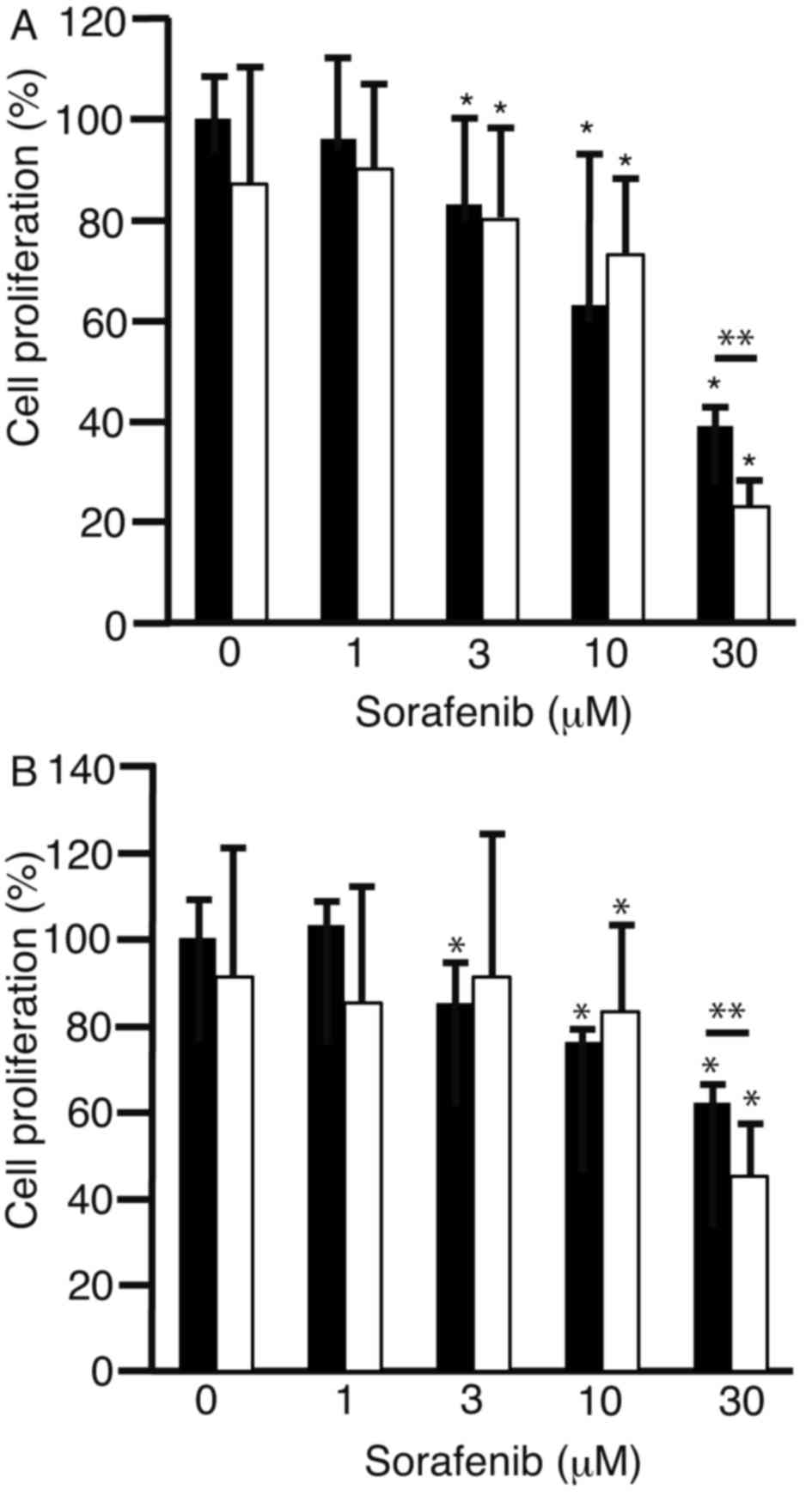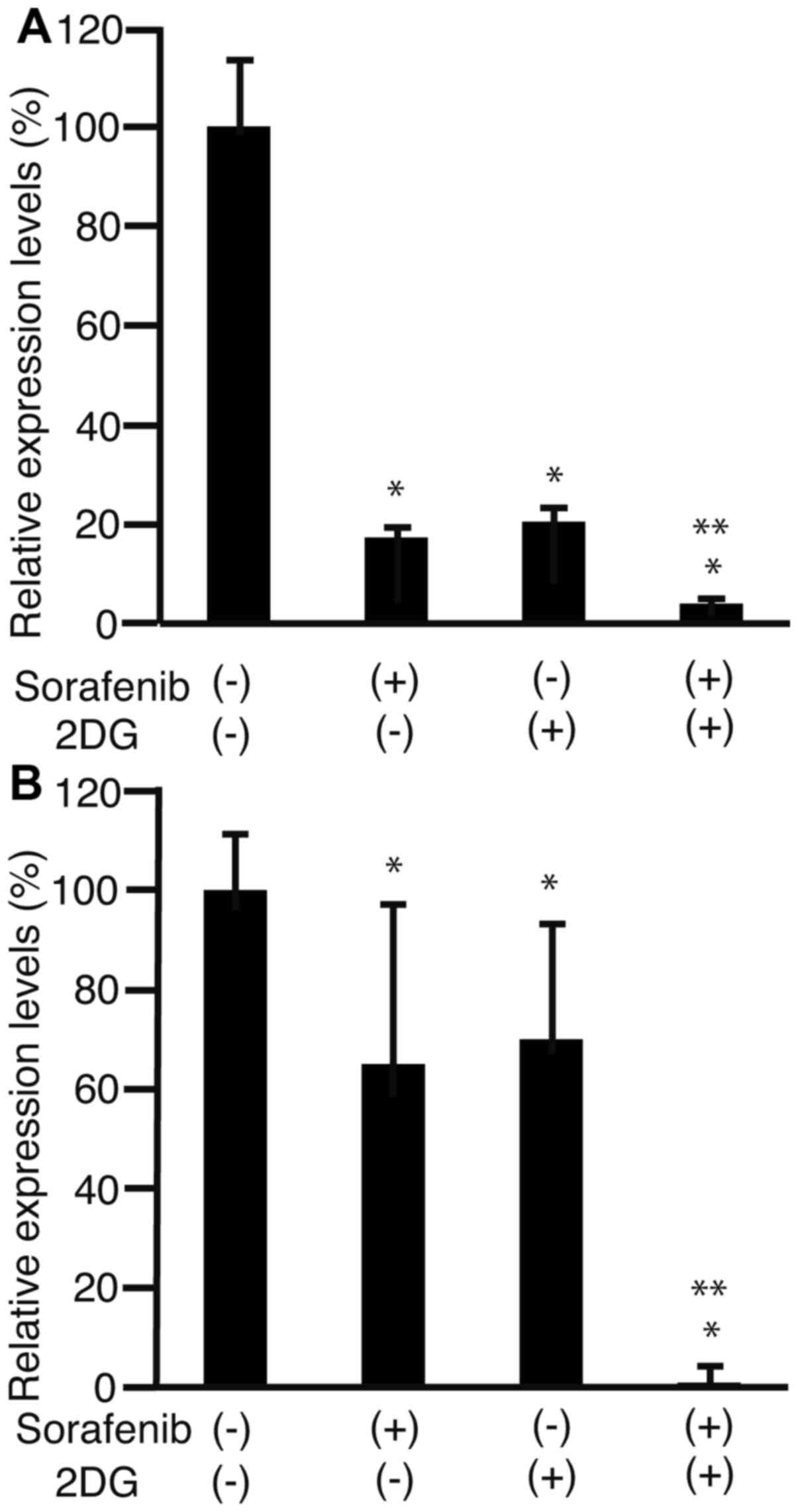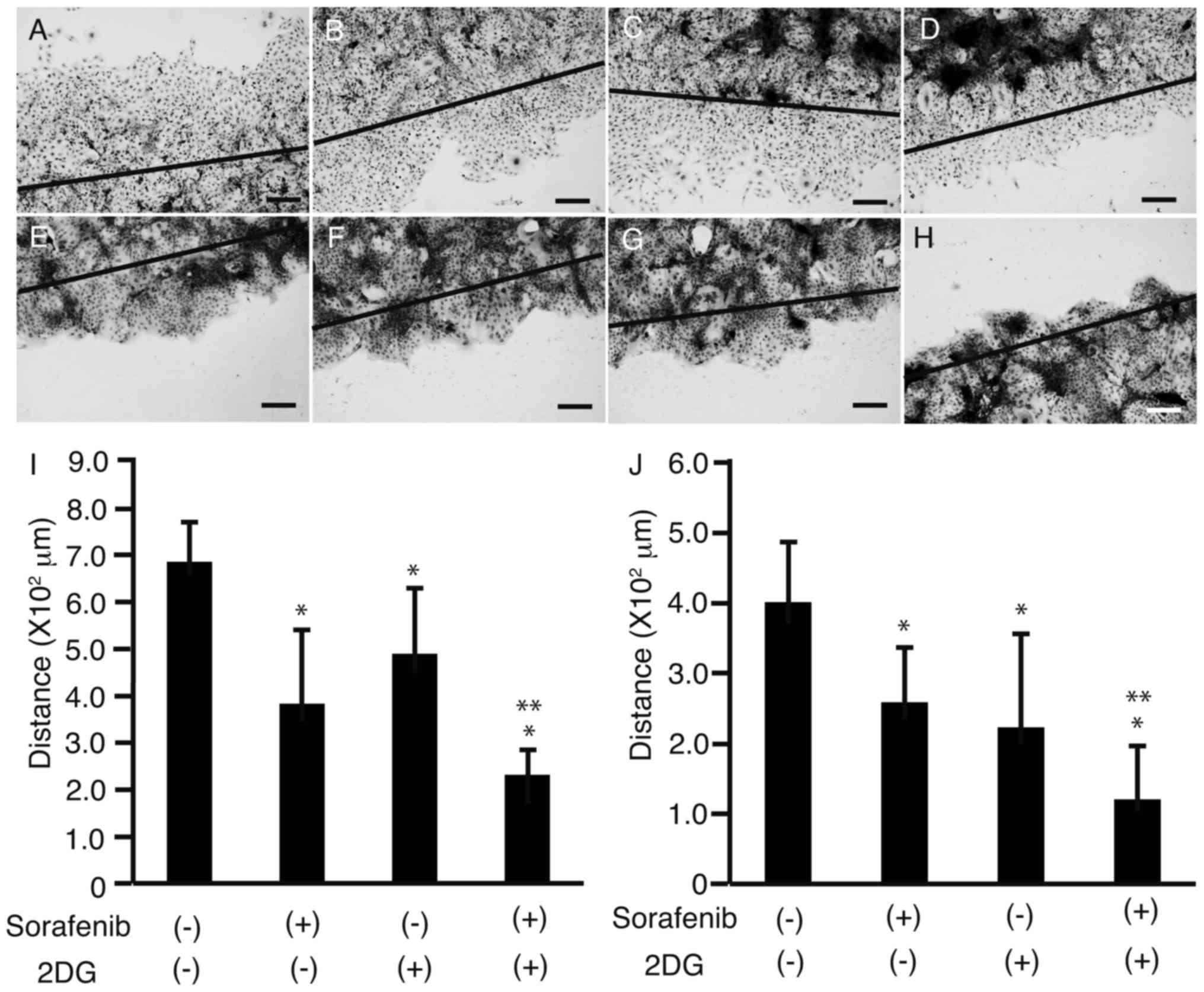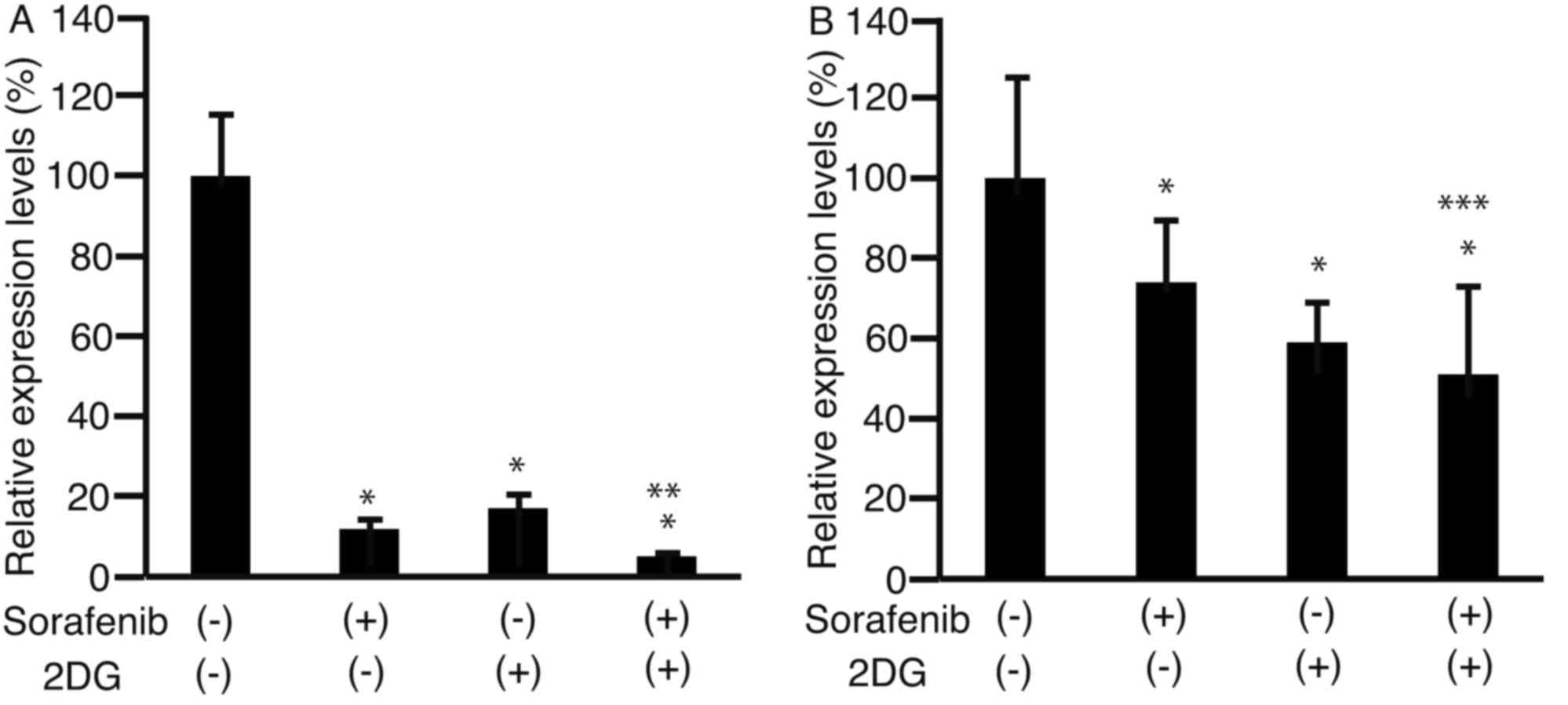|
1
|
Cameron AM: Screening for viral hepatitis
and hepatocellular cancer. Surg Clin North Am. 95:1013–1021. 2015.
View Article : Google Scholar : PubMed/NCBI
|
|
2
|
Khan FZ, Perumpail RB, Wong RJ and Ahmed
A: Advances in hepatocellular carcinoma: Nonalcoholic
steatohepatitis-related hepatocellular carcinoma. World J Hepatol.
7:2155–2161. 2015. View Article : Google Scholar : PubMed/NCBI
|
|
3
|
Wells SA, Hinshaw JL, Lubner MG,
Ziemlewicz TJ, Brace CL and Lee FT Jr: Liver ablation: Best
practice. Radiol Clin North Am. 53:933–971. 2015. View Article : Google Scholar : PubMed/NCBI
|
|
4
|
Katano T, Mizoshita T, Senoo K, Sobue S,
Takada H, Sakamoto T, Mochiduki H, Ozeki T, Kato A, Matsunami K, et
al: The efficacy of transcatheter arterial embolization as the
first-choice treatment after failure of endoscopic hemostasis and
endoscopic treatment resistance factors. Dig Endosc. 24:364–369.
2012. View Article : Google Scholar : PubMed/NCBI
|
|
5
|
Furuse J, Ishii H, Nakachi K, Suzuki E,
Shimizu S and Nakajima K: Phase I study of sorafenib in Japanese
patients with hepatocellular carcinoma. Cancer Sci. 99:159–165.
2008.PubMed/NCBI
|
|
6
|
Kuczynski EA, Lee CR, Man S, Chen E and
Kerbel RS: Effects of sorafenib dose on acquired reversible
resistance and toxicity in hepatocellular carcinoma. Cancer Res.
75:2510–2519. 2015. View Article : Google Scholar : PubMed/NCBI
|
|
7
|
Chen J, Jin R, Zhao J, Liu J, Ying H, Yan
H, Zhou S, Liang Y, Huang D, Liang X, et al: Potential molecular,
cellular and microenvironmental mechanism of sorafenib resistance
in hepatocellular carcinoma. Cancer Lett. 367:1–11. 2015.
View Article : Google Scholar : PubMed/NCBI
|
|
8
|
Vaitheesvaran B, Xu J, Yee J, Qy L, Go VL,
Xiao GG and Lee WN: The Warburg effect: A balance of flux analysis.
Metabolomics. 11:787–796. 2015. View Article : Google Scholar : PubMed/NCBI
|
|
9
|
Jang M, Kim SS and Lee J: Cancer cell
metabolism: Implications for therapeutic targets. Exp Mol Med.
45:e452013. View Article : Google Scholar : PubMed/NCBI
|
|
10
|
Granja S, Pinheiro C, Reis RM, Martinho O
and Baltazar F: Glucose addiction in cancer therapy: Advances and
drawbacks. Curr Drug Metab. 16:221–242. 2015. View Article : Google Scholar : PubMed/NCBI
|
|
11
|
Zhang D, Li J, Wang F, Hu J, Wang S and
Sun Y: 2-Deoxy- D-glucose targeting of glucose metabolism in cancer
cells as a potential therapy. Cancer Lett. 355:176–183. 2014.
View Article : Google Scholar : PubMed/NCBI
|
|
12
|
Brito AF, Mendes M, Abrantes AM, Tralhão
JG and Botelho MF: Positron emission tomography diagnostic imaging
in multidrug-resistant hepatocellular carcinoma: Focus on
2-deoxy-2-(18F)Fluoro-D-Glucose. Mol Diagn Ther. 18:495–504. 2014.
View Article : Google Scholar : PubMed/NCBI
|
|
13
|
Davies B and Fried M: The L19 ribosomal
protein gene (RPL19): Gene organization, chromosomal mapping, and
novel promoter region. Genomics. 25:372–380. 1995. View Article : Google Scholar : PubMed/NCBI
|
|
14
|
Vandooren J, Van den Steen PE and
Opdenakker G: Biochemistry and molecular biology of gelatinase B or
matrix metalloproteinase-9 (MMP-9): The next decade. Crit Rev
Biochem Mol Biol. 48:222–272. 2013. View Article : Google Scholar : PubMed/NCBI
|
|
15
|
Zhang Y, Shen Y, Cao B, Yan A and Ji H:
Elevated expression levels of androgen receptors and matrix
metalloproteinase-2 and −9 in 30 cases of hepatocellular carcinoma
compared with adjacent tissues as predictors of cancer invasion and
staging. Exp Ther Med. 9:905–908. 2015.PubMed/NCBI
|
|
16
|
Wu J, Kou W, Gao MT, Zhou YN, Wang AQ, Xue
QJ and Qiao L: Effects of
{2-[(3-carboxy-1-oxoprogy1)amino]-2-deoxy-D-glucose} on human
hepatocellular carcinoma cell line. Acta Pharmacol Sin. 26:635–640.
2005. View Article : Google Scholar : PubMed/NCBI
|
|
17
|
Tomizawa M, Kondo F and Kondo Y: Growth
patterns and interstitial invasion of small hepatocellular
carcinoma. Pathol Int. 45:352–358. 1995. View Article : Google Scholar : PubMed/NCBI
|
|
18
|
Takemura A, Che XF, Tabuchi T, Moriya S,
Miyazawa K and Tomoda A: Enhancement of cytotoxic and pro-apoptotic
effects of 2-aminophenoxazine-3-one on the rat hepatocellular
carcinoma cell line dRLh-84, the human hepatocellular carcinoma
cell line HepG2, and the rat normal hepatocellular cell line RLN-10
in combination with 2-deoxy-D-glucose. Oncol Rep. 27:347–355.
2012.PubMed/NCBI
|
|
19
|
Lv Y, Zhao S, Han J, Zheng L, Yang Z and
Zhao L: Hypoxia-inducible factor-1α induces multidrug resistance
protein in colon cancer. Onco Targets Ther. 8:1941–1948. 2015.
View Article : Google Scholar : PubMed/NCBI
|
|
20
|
Maher JC, Wangpaichitr M, Savaraj N,
Kurtoglu M and Lampidis TJ: Hypoxia-inducible factor-1 confers
resistance to the glycolytic inhibitor 2-deoxy-D-glucose. Mol
Cancer Ther. 6:732–741. 2007. View Article : Google Scholar : PubMed/NCBI
|
|
21
|
Raez LE, Papadopoulos K, Ricart AD,
Chiorean EG, Dipaola RS, Stein MN, Lima CM Rocha, Schlesselman JJ,
Tolba K, Langmuir VK, et al: A phase I dose-escalation trial of
2-deoxy-D-glucose alone or combined with docetaxel in patients with
advanced solid tumors. Cancer Chemother Pharmacol. 71:523–530.
2013. View Article : Google Scholar : PubMed/NCBI
|
|
22
|
Singh D, Banerji AK, Dwarakanath BS,
Tripathi RP, Gupta JP, Mathew TL, Ravindranath T and Jain V:
Optimizing cancer radiotherapy with 2-deoxy-d-glucose dose
escalation studies in patients with glioblastoma multiforme.
Strahlenther Onkol. 181:507–514. 2005. View Article : Google Scholar : PubMed/NCBI
|


















